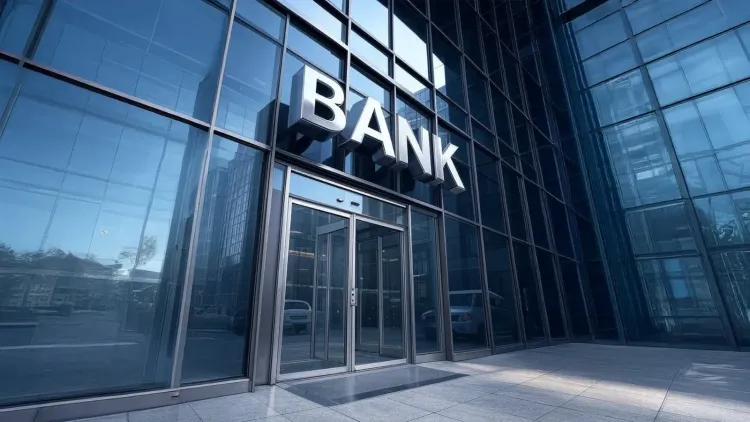Will India's Banking Sector Experience a Major Turnaround in Q3?

Synopsis
Key Takeaways
- Q3 FY26 may signify a turning point for India’s banking sector.
- Private banks are maintaining strong lending yields despite repo rate cuts.
- The Cash Reserve Ratio reduction is set to enhance liquidity.
- Deposit rates are projected to decline gradually.
- Stabilisation of asset quality will support credit cost reductions.
Mumbai, July 24 (NationPress) The third quarter (Q3) of FY26 is anticipated to be a pivotal moment for India’s banking sector, with net interest margins (NIMs) expected to stabilise and earnings poised for recovery, as indicated by a recent report released on Thursday.
This optimistic forecast is underpinned by decreasing funding costs, the forthcoming reduction in the Cash Reserve Ratio (CRR), and a normalisation of credit costs, according to insights shared by Motilal Oswal Financial Services.
In this recovery phase, private sector banks have demonstrated remarkable resilience in upholding lending yields, even amidst multiple repo rate reductions by the Reserve Bank of India (RBI).
The report underscores that private banks have successfully elevated their spreads on new loans, thereby safeguarding profitability in a low-rate landscape.
In May 2025, the weighted average lending rate (WALR) for new loans from private banks increased by 7 basis points month-on-month, as detailed in the report.
This rise signifies robust pricing strategies and sustained credit demand. The spread on new rupee loans above the repo rate for private banks has now reached its highest level since August 2022, currently standing at 415 basis points.
This trend suggests that lenders are effectively navigating policy shifts while also maintaining healthy margins through strategic loan repricing.
Furthermore, private banks excelled in terms of WALR on outstanding loans. While the system-wide WALR on outstanding loans dipped slightly to 9.67 percent in May, private lenders experienced a 2 basis point increase, contrary to the prevailing trend.
On the funding front, deposit rates are gradually beginning to decline. The weighted average term deposit rate (WATDR) for private banks marginally decreased to 7.19 percent in May, with further reductions anticipated as banks implement rate cuts on savings and term deposits ranging from 20 to 100 basis points.
The full advantages of these reductions are likely to become evident in the latter half of the fiscal year, alleviating funding pressures, according to the report.
As per Motilal Oswal, while NIMs may face pressure in the short term, they are expected to reach their lowest point by the second or third quarter of FY26.
The planned phased CRR reduction starting September 2025 is predicted to infuse approximately Rs 2.5 lakh crore of lasting liquidity into the banking system, further aiding margin recovery.
Additionally, credit costs are anticipated to decline as asset quality stabilises, especially in the retail and microfinance sectors.
“This enhancement will further bolster the earnings recovery expected in the latter half of FY26,” the report concluded.










